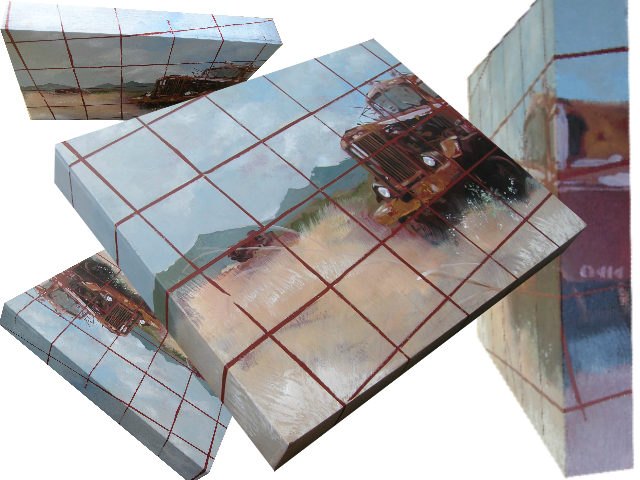Why are there so many pineapples in my artwork?
Pineapples were all the rage this year, and as a trend they seem to be here to stay. We saw the lovable fruit everywhere and I have to admit, I was more than tickled to be able to add to my collection of things pineapple. It is apparent in my body of work, my accessories and home furnishings, and my social media feeds, that I am a self-dubbed pine princess. The I-liked-it-before-it-was-cool tone aside, here’s some background on why it appears so much in my art.
In a number of my pineapple pieces, I focus on the closeup of the skin of the pineapple. The beautiful fibonacci dermis in it’s myriad of colors is actually a result of the helical clusters of the plant’s flowers forming the fruit we are familiar with. It is so much more than meets the eye.
I often speak about pineapple as being dear to my heart because of my family’s plantation background. But it isn’t pride of place or family that makes it special. There is so much more to it than that. I don’t know if I have the words to articulate it.
My dad is from Lana’i and my mom, like me, is a Wahiawa girl. They both donned green and gold as graduates of Lana’i and Leilehua High School. Both of them grew up in humble households raised by parents employed by Dole. I have aunties that worked in the cannery. Uncles that worked in the fields too. Both of my paternal grandparents worked hard in the fields, harvesting and planting. My maternal grandfather worked for the plantation too, and my grandma, who grew up in the plantation camp Brody 4 worked lots of different kinds of jobs. Grandmas on both sides did laundry for the single field workers for side money. They were all clever and hardworking. They were good at what they did. And they did a lot.
There is so much story that precedes this little plantation history, and even more that comes after. Ours is like many family’s stories. Both happy and sad and complicated to say the least. But I am the child of people who shared the same values who were providentially brought together by the agricultural triumph we call “pineapple”.
When you look at the skin of a pineapple, you are looking at the seed, the flower and the fruit all at once. Just like us. Aren’t the stories of our lives like that? Starting somewhere in the middle and stretching into the past and future at the same time? Instead of the words I cannot find to express what I feel about this part of what I consider to be my heritage, I paint the skin of the pineapple. An elegant retelling of all our stories.












